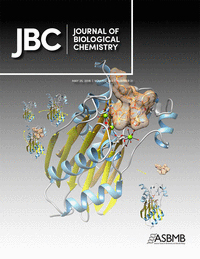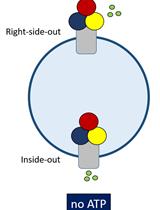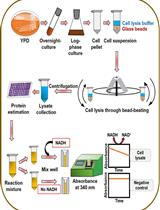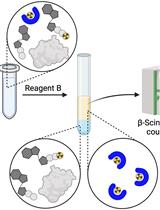- EN - English
- CN - 中文
Manganese Superoxide Dismutase Activity Assay in the Yeast Saccharomyces cerevisiae
啤酒酵母中的锰超氧化物歧化酶活性测定
发布: 2020年03月05日第10卷第5期 DOI: 10.21769/BioProtoc.3542 浏览次数: 3586
评审: Juan Facundo Rodriguez AyalaMasato YanoAnonymous reviewer(s)
Abstract
Superoxide dismutases (SODs) act as a primary defence against reactive oxygen species (ROS) by converting superoxide anion radicals (O2-) into molecular oxygen (O2) and hydrogen peroxide (H2O2). Members of this enzyme family include CuZnSODs, MnSODs, FeSODs, and NiSODs, depending on the nature of the cofactor that is required for proper activity. Most eukaryotes, including yeast, possess CuZnSOD and MnSOD. This protocol aims at assessing the activity of the yeast Saccharomyces cerevisiae MnSOD Sod2p from cellular extracts using nitroblue tetrazolium staining. This method can be used to estimate the cellular bioavailability of Mn2+ as well as to evaluate the redox state of the cell.
Keywords: Superoxide dismutase (超氧化物歧化酶)Background
SODs are defined as metal-containing antioxidant enzymes that reduce harmful free radicals of oxygen formed during normal aerobic metabolism to oxygen and hydrogen peroxide. These enzymes are classified based on the metal required as cofactor for proper enzymatic activity: CuZnSODs, MnSODs, FeSODs, and NiSODs. In the yeast Saccharomyces cerevisiae, there are two SODs: the CuZn-Sod1p and the Mn-Sod2p (Abreu and Cabelli, 2010). This protocol focuses on the determination of the enzymatic activity of the Mn-Sod2p, found in the yeast mitochondrial matrix. In this protocol, activity of Sod2p is visualized through nitroblue tetrazolium staining. According to this method, the excitation of riboflavin by light, catalyzed by tetramethylethylenediamine (TEMED), generates superoxide radicals, which convert the yellow nitroblue tetrazolium into blue formazan. In the regions in which Sod2p is present, the superoxide radicals are rapidly removed and formazan formation is prevented. Sod2p is thereby revealed in clear bands on a blue background (Packer, 2002). The method described here includes inhibition of the CuZn-Sod1p by potassium cyanide and thereby enables to determine specifically for the enzymatic activity of the Mn-Sod2p. Apart from providing a method to quickly determine the enzymatic activity of Sod2p, this protocol can be used to correlate the activity of the mitochondrial Sod2p to the bioavailability of manganese cations required for proper activity, a decreased manganese content in the close vicinity of Sod2p resulting in a lower enzymatic activity (Thines et al., 2018). Besides, due to the implication of both Sod2p and manganese cations in resistance against oxidative stress, this protocol can be used to assess the redox state of yeast cells, a decreased enzymatic activity reflecting a reduced ability of the cell to neutralize free radicals.
Materials and Reagents
- 425-600 µm diameter acid-washed glass beads (Sigma-Aldrich, catalog number: G8772 )
- Petri dishes (Sigma-Aldrich, catalog number: P5606-400EA )
- 50 ml Falcon® tubes (Dutscher, catalog number: 352070 )
- Eppendorf tubes (VWR, catalog number: 89000-028 )
- Bovine serum albumin standard, 2 mg/ml (Thermo Scientific, catalog number: 23210 )
- Protease inhibitor cocktail [4 mg/ml of leupeptin (Roth, catalog number: CN33.2 ), aprotinin (Roth, catalog number: A162.3 ), antipain (Roth, catalog number: 2933.2 ), pepstatin (Roth, catalog number: 2936.3 ), and chymostatin (Sigma-Aldrich, catalog number: EI6)]
- Yeast extract KAT (Ohly, catalog number: OHLY® KAT)
- Glucose (Merck, catalog number: 1083469029 )
- Nitroblue tetrazolium (Sigma-Aldrich, catalog member: N6876 )
- 4-15% Mini-PROTEAN® TGXTM Precast Protein Gels, 10-well, 50 µl (Bio-Rad, catalog number: 4561084 )
- MilliQ water
- Ethylenediaminetetraacetic acid (EDTA) disodium salt dihydrate (Sigma-Aldrich, catalog number: E4884 )
- Ethylene glycol-bis(β-aminoethyl ether)-N,N,N′,N′-tetraacetic acid (EGTA) (Sigma-Aldrich, catalog number: E3889 )
- NaCl (Sigma-Aldrich, catalog number: S9888 )
- Triton X-100 (Sigma-Aldrich, catalog number: X100 )
- Phenylmethylsulfonyl fluoride (PMSF) (Sigma-Aldrich, catalog number: 10837091001 )
- Bicinchoninic acid (Supelco, catalog number: B9643 )
- CuSO4·5H2O (Sigma-Aldrich, catalog number: 209198 )
- Trizma base (Sigma-Aldrich, catalog number: 93362 )
- HCl (Sigma-Aldrich, catalog number: H1758 )
- NaOH (Sigma-Aldrich, catalog number: 795429 )
- Glycerol (Sigma-Aldrich, catalog number: G5516 )
- Bromophenol blue (Sigma-Aldrich, catalog number: B0126 )
- Glycine (Sigma-Aldrich, catalog number: 50046 )
- TEMED (Sigma-Aldrich, catalog number: T9281 )
- Riboflavin (Sigma-Aldrich, catalog number: 47861 )
- KCN (Sigma-Aldrich, catalog number: 60178 )
- Na2HPO4 (Sigma-Aldrich, catalog number: S7907 )
- NaH2PO4 (Sigma, Aldrich, catalog number: S3139 )
- K2HPO4 (Sigma-Aldrich, catalog number: 1551128 )
- KH2PO4 (Sigma-Aldrich, catalog number: 1551139 )
- Liquid nitrogen
- YD plates (see Recipes)
- NaPO4 buffer (0.1 M, pH 7.8) (see Recipes)
- Tris buffer (1 M, pH 6.8) (see Recipes)
- Potassium phosphate buffer (1 M, pH 7.8) (see Recipes)
- EDTA (100 mM, pH 8.0) (see Recipes)
- EGTA (100 mM, pH 8.0) (see Recipes)
- Lysis buffer (see Recipes)
- CuSO4·5H2O (4%) (see Recipes)
- 2x cc. sample buffer for native gels (see Recipes)
- Native gel running buffer (see Recipes)
- Staining solution (see Recipes)
Equipment
- Centrifuge for Eppendorf tubes (Hettich Zentrifugen, model: MIKRO 20 )
- Vortex (VWR, model: 444-0996 )
- Autoclave (Systec, model: VX/VE )
- Protein gel cassette (Bio-Rad, model: 1645052 )
- Gel scanner (Amersham, model: 29083461 )
- Incubator shaker for yeast growth in liquid culture (Edmund Bühler GmbH, model: VKS-75 control )
Procedure
文章信息
版权信息
© 2020 The Authors; exclusive licensee Bio-protocol LLC.
如何引用
Readers should cite both the Bio-protocol article and the original research article where this protocol was used:
- Thines, L. and Morsomme, P. (2020). Manganese Superoxide Dismutase Activity Assay in the Yeast Saccharomyces cerevisiae. Bio-protocol 10(5): e3542. DOI: 10.21769/BioProtoc.3542.
- Thines, L., Deschamps, A., Sengottaiyan, P., Savel, O., Stribny, J. and Morsomme, P. (2018). The yeast protein Gdt1p transports Mn2+ ions and thereby regulates manganese homeostasis in the Golgi. J Biol Chem, 293(21): 8048-8055.
分类
生物化学 > 蛋白质 > 活性
细胞生物学 > 细胞染色 > 蛋白质
分子生物学 > 蛋白质 > 活性
您对这篇实验方法有问题吗?
在此处发布您的问题,我们将邀请本文作者来回答。同时,我们会将您的问题发布到Bio-protocol Exchange,以便寻求社区成员的帮助。
提问指南
+ 问题描述
写下详细的问题描述,包括所有有助于他人回答您问题的信息(例如实验过程、条件和相关图像等)。
Share
Bluesky
X
Copy link













